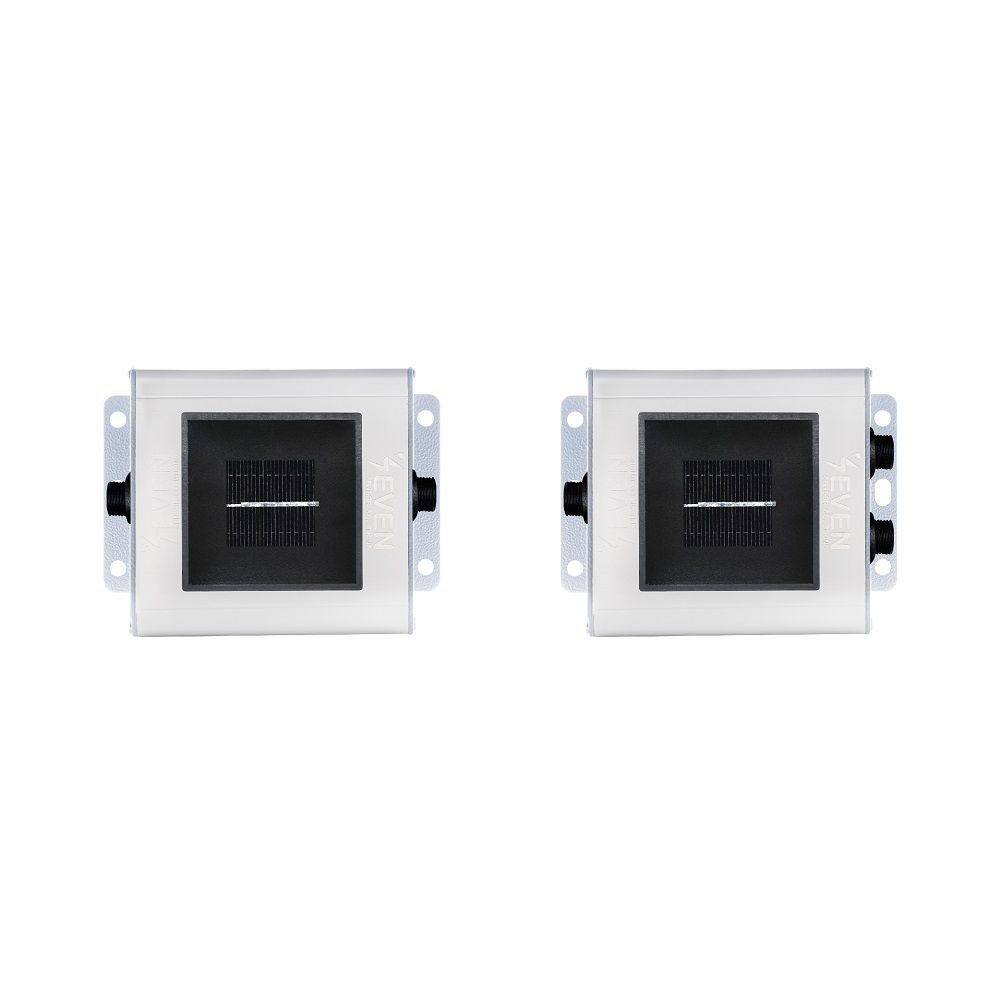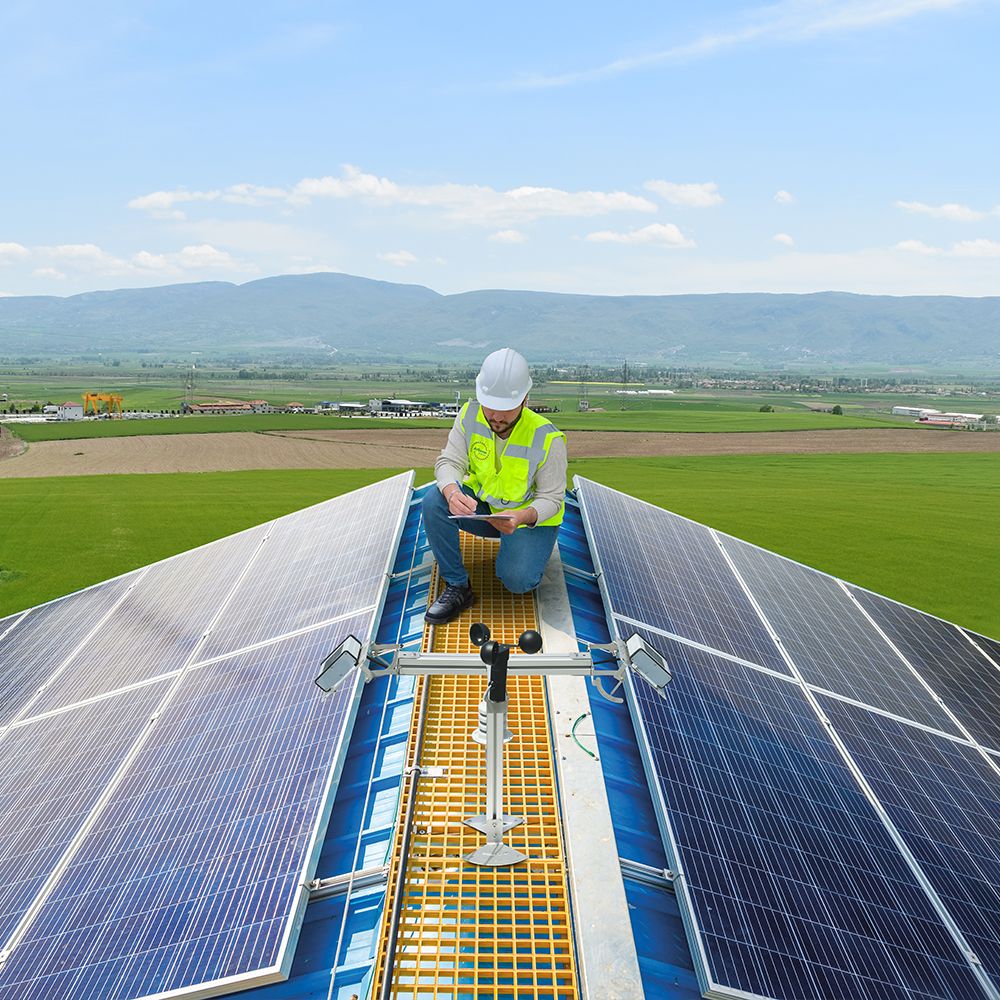Dual Orientations Irradiance Sensor – 3S-2IS
The SEVEN 3S-2IS Dual Orientation Irradiance Sensor is specially designed to calculate the Performance Ratio (PR) for dual-orientation PV plants. It determines the average irradiance value based on the number of panels in each direction. Since the installation directions and number of panels in PV plants may vary, the user can set the number of panels for each orientation to ensure accurate calculations. The 3S-2IS features a special design that allows simultaneous connection of two Irradiance Sensors, two Module Temperature Sensors, one Ambient Temperature Sensor, and one Wind Speed Sensor.
The number of panels in both directions, to which the sensors are connected, is entered into the electronic card via the 3S-2IS Configuration Interface. The total effective irradiance and total effective module temperature are then calculated and communicated to the datalogger via the Modbus RTU protocol. Using these values, the accurate Performance Ratio can be calculated within the monitoring system.
TECHNICAL DATA OF DUAL ORIENTATION IRRADIANCE SENSOR
| Item Code | 3S-2IS |
| Reference Cell | Monocrystalline Silicon (31 mm x 31 mm) |
| Current Shunt | High precision shunt resistor directly soldered to the terminals of the cell |
| Irradiance Range | 0 – 1600 W/m² |
| Uncertainty | ≤1% (less than 2%; as per IEC61724-1 standard Class A) |
| Resolution | 0.1 W/m2 (less than 1W/m²; as per IEC61724-1 standard Class A) |
| Response Time | 1 sec. (less than 3 sec; as per IEC61724-1 standard Class A) |
| Drift | Very small drift of <0.3%/ year |
| Field of View | Larger than 160°; as per IEC61724-1 standard Class A |
| Tilt-Azimuthal Angle | 0°- 0° (≤ 1°; as per IEC61724-1 standard Class A) |
| Output Rate | 1/s |
| Data Output | RS485 up to 38400 Baud |
| Communication Protocol | Modbus RTU |
| Power Supply | 12 to 30 VDC |
| Power Consumption | 25 mA max @24 VDC |
| Electrical Connection | 3 m LIYYC11Y PUR Cable, UV and Weather Resistant |
| Galvanic Isolation | 1000 V between power supply and RS485 bus |
| Cell Temperature Sensor Type | PT1000 Class A as per EN 60751 |
| Operating Temperature Range | -40°C to +85°C |
| Operating Humidity Range | 0 to 100% |
| Reference Cell Dimensions | 140 mm x 110 mm x 42 mm (W x L x H) |
| Weight | 0,3 kg |
| IP Rating | IP54 (IP65, IP68 options) |
| Sensor Housing Material | Aluminum |
| Calibration | Each sensor is calibrated under Class AAA Sun Similator as per IEC 60904-2 and IEC 60904-4 by using a reference cell calibrated by ISFH-Germany |
| Test | The test is carried under natural sunlight by using a calibrated reference cell from Fraunhofer ISE, Germany |
| Connected External Sensors | Two Module Temperature Sensors (3S-MT-PT1000) |
| Ambient Temperature Sensor (3S-AT-PT1000) | |
| Wind speed sensor (3S-WS-PLS) |
What Makes the 3S-2IS Different?
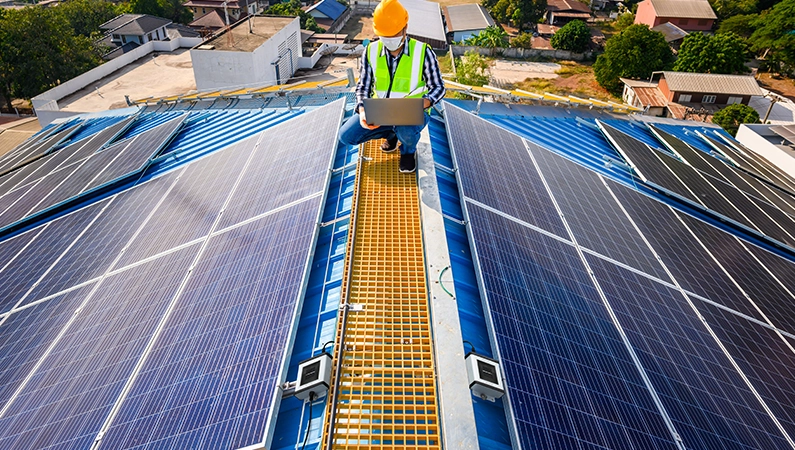
In many solar plants, modules are installed facing different directions — for example, east-west rooftops or mixed-tilt utility arrays. A single-plane irradiance sensor cannot represent the real energy input to these systems, because it measures only one side of the array.
The 3S-2IS measures sunlight from both orientations using two calibrated reference cells.
It then calculates an average irradiance, based on how many PV modules face each direction. This gives operators a realistic picture of system performance and allows more accurate PR calculations across both sub-arrays.
How Does the Dual Orientation Irradiance Sensor Work?
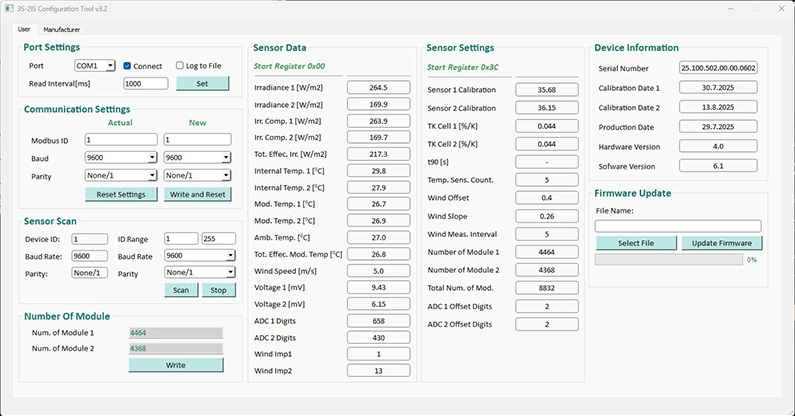
Each of the two monocrystalline silicon reference cells in the 3S-2IS measures irradiance on its respective plane. Once the number of panels in each orientation is entered, the built-in microcontroller automatically calculates the weighted average irradiance using our special software. This means that the orientation with a higher number of panels has a greater influence on the final average irradiance value.
A PT1000 temperature sensor on each reference cell continuously compensates for temperature-related variations, ensuring Class A accuracy. If desired, you can also connect module temperature, ambient temperature, or wind speed sensors, all read and transmitted via the same RS-485 connection.
The final Total Effective Irradiance value, along with temperature data, is sent via Modbus RTU or SunSpec protocol, enabling direct integration with dataloggers, SCADA systems, or performance monitoring platforms.
What are the Key Features of the Dual Orientation Irradiance Sensor?
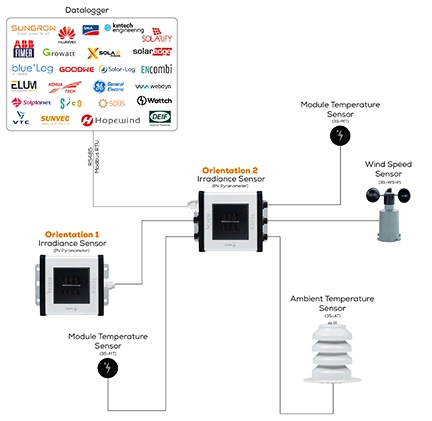
- Dual-plane accuracy: Measures irradiance on two surfaces simultaneously and calculates effective irradiance.
- Plug-and-play Modbus integration: Compatible with common dataloggers, inverters, and monitoring systems.
- IEC Class A precision: Fully compliant with IEC 61724-1 and IEC 60904 calibration procedures.
- Expandable inputs: Optional module temperature, ambient temperature and wind speed sensors for complete environmental monitoring.
- Built for the field: Weatherproof housing (IP54), designed for long-term rooftop or ground-mount use.
- Long-term reliability: Low power consumption and 5-year warranty ensure continuous operation.
Frequently Asked Questions (FAQ)
1- Can I use this sensor with my existing SCADA system?
Yes. The 3S-2IS communicates through RS-485 Modbus RTU and is fully compatible with most SCADA and data acquisition platforms.
2- How do I define the ratio between the two orientations?
You can configure the number of modules facing each direction directly through the SEVEN Configuration Tool. The sensor automatically applies the correct weighting when calculating Total Effective Irradiance.
3- Are the dual orientation irradiance sensors Class A?
Yes. 3S-2IS sensor is Class A as per IEC standards.
4- What accuracy does the 3S-2IS sensor provide?
1 % uncertainty, compliant with IEC 61724-1 Class A.
5- Can I use two seperate irradiance sensors to calculate the performance instead of SEVEN dual orientation irradiance sensor?
Our dual-orientation sensors are designed for systems with two directions/angles. They measure plane-of-array irradiance and back-of-module temperature for each direction, and our software combines these readings using a panel-number-weighted average, so directions with more panels influence the final “effective irradiance” more. This mirrors how the plant actually produces energy and gives the most reliable performance and PR.
6- How are the sensors tested and calibrated?
Each irradiance sensor is calibrated under a Class AAA Sun Simulator as per IEC 60904-2 and IEC 60904-4, using a reference cell calibrated by ISFH-Germany.
The sensors are tested in natural sunlight against a reference cell calibrated by the Fraunhofer ISE Institute.
7- How often should I recalibrate the sensor?
Recalibration every 2 years is recommended by IEC standards for maximum accuracy.
8- Where can I recalibrate the irradiance sensor?
SEVEN Sensor provides calibration services at its facilities. Additionally we offer user-friendly interface where users can recalibrate the sensors in their home country and enter the new calibration values into the system.
9- What is the price of dual orientation irradiance sensors?
The 3S-2IS sensor is available between 485 EUR and 880 EUR EUR.
10- Does the sensor include a cable?
Each unit comes with a 3 m LIYYC11Y PUR cable (UV and weather resistant) with 6 wires twisted (including ground for both Data & Power). Other lengths are available on request.
11- What are the delivery times?
- Small orders: approx. 1-2 weeks
- Bulk orders (100 pcs): approx. 6-8 weeks
12- How do I set up the sensor?
The Dual Orientations Irradiance Sensor needs to be in the same direction and the same inclination as the solar panels. They should be positioned in the same or higher plane than the solar panels. Follow our user manual which include step-by-step instructions for configuring the sensors. Conatct Seven Sensor if you require further support.
13- What is the typical warranty?
All SEVEN irradiance sensors include a five-year warranty.
14- What external sensors can be connected to the dual orientation irradiance sensor?
The SEVEN 3S-2IS sensor can also function as a hub, supporting the connection of external sensors such as:
- 2 Module temperature sensors
- Ambient temperature sensors
- Wind speed sensors
